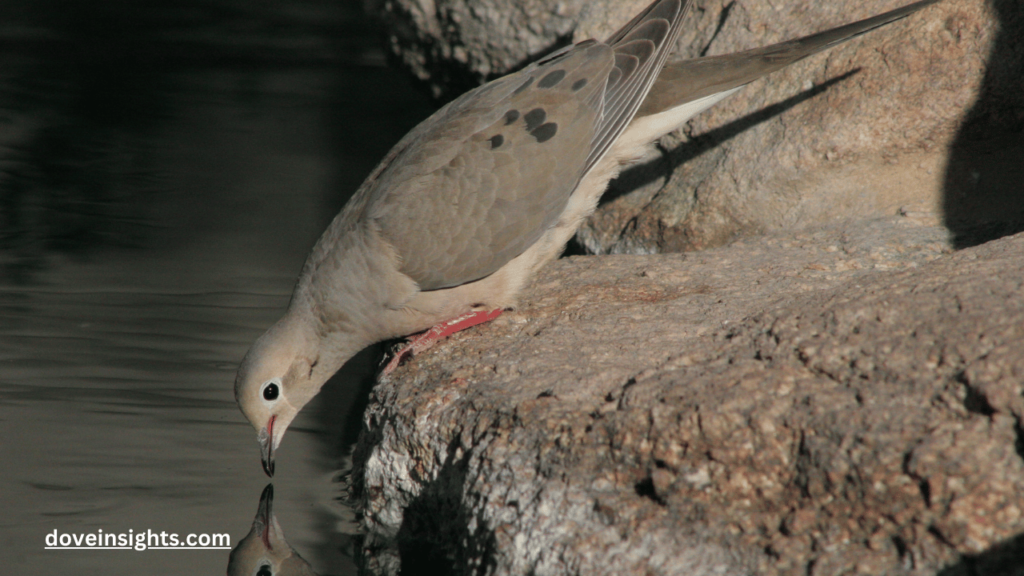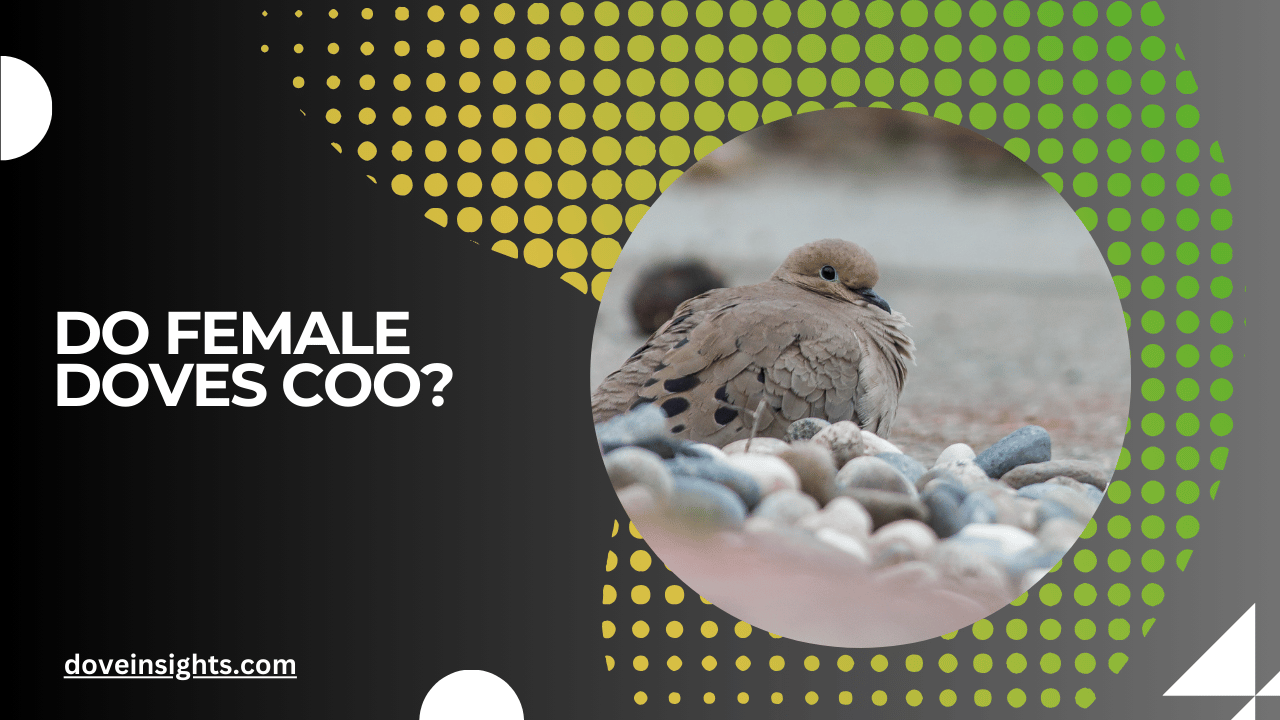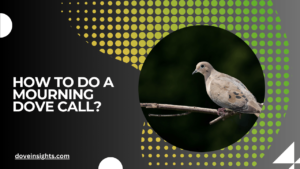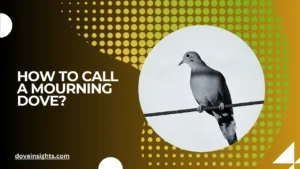The soft, melodic cooing of mourning doves is a sound that many of us recognize instantly, bringing to mind images of serene landscapes and quiet mornings.
Their soothing call is so characteristic that it has become one of the most iconic bird sounds across North America. However, when it comes to the question of who exactly makes this gentle cooing noise, many are surprised to learn that it’s primarily the male dove performing this ritual. But does the female mourning dove ever join in the serenade?
Do they coo like their male counterparts, or is the cooing a behavior reserved solely for the males?
Understanding whether female doves coo is more than just an interesting curiosity—it’s essential for those who wish to deepen their knowledge of bird behavior, especially for birdwatchers, nature enthusiasts, and anyone fascinated by the communication of birds.
This article dives into the reasons behind dove calls, exploring the difference between male and female cooing behaviors, the role of cooing in dove communication, and the impact of gender on these vocalizations.
By the end, you’ll have a clear understanding of the mourning dove’s vocal habits and what these calls signify.
Contents
- 1 The Science Behind Dove Calls
- 2 Male vs. Female Dove Coos: Who Does the Talking?
- 3 The Role of Coos in Courtship and Mating
- 4 Communication Beyond Coos: The Dove’s Full Range of Vocalizations
- 5 The Cultural Significance of Dove Cooing
- 6 Conclusion:
- 7 FAQ’s
- 7.0.1 Do female mourning doves make the same cooing sounds as males?
- 7.0.2 Why do male mourning doves coo?
- 7.0.3 Can female mourning doves produce loud coos like the males?
- 7.0.4 What other sounds do mourning doves make?
- 7.0.5 Do female mourning doves participate in courtship displays?
- 7.0.6 Why is the cooing of mourning doves important?
The Science Behind Dove Calls
Before delving into whether female mourning doves coo, it’s essential to understand why doves coo in the first place.
The cooing sound that is most commonly associated with doves is produced by a combination of air flow and vibration in their vocal cords. Mourning doves, like many other bird species, use cooing as a form of communication.
These calls can serve a variety of purposes, including mating displays, territorial defense, and alerting others to danger.
Mourning doves have a unique structure in their trachea and syrinx (the bird’s vocal organ), which allows them to create a wide range of sounds.
The deep, resonant cooing is generally produced by the male dove, and it plays a significant role in attracting a mate and marking territory. While males tend to be the primary vocalists, some female doves may produce softer versions of the coo or other sounds, especially in response to male calls.
Understanding the anatomy of dove calls also helps explain the differences in how males and females use vocalizations. Male doves are known for producing longer, more pronounced cooing sequences to attract mates or assert their dominance over a territory.
Female doves, on the other hand, may use cooing in more subtle ways, often as part of their interactions with their male counterparts, but the frequency and intensity of their calls are generally lower.
Male vs. Female Dove Coos: Who Does the Talking?
As previously mentioned, male doves are the primary vocalizers, especially when it comes to the cooing that defines the mourning dove’s signature sound. The males typically begin their cooing rituals in the early spring as the breeding season approaches, announcing their presence and readiness to mate.
Their coos can often be heard from long distances, as they carry far and are meant to both attract females and ward off competing males.
On the other hand, female doves do occasionally produce vocalizations, but they are generally softer and less frequent than those of the males. Female doves tend to respond to the males’ calls with short, softer coos, particularly when they are evaluating a potential mate.
The sound of a female’s coo is often described as quieter and more subdued than the more pronounced calls of males. While female mourning doves might occasionally vocalize in response to mating or in interactions with their mates, their calls are less a feature of territorial displays or attracting attention.
Do female doves ever coo independently?
Generally speaking, female doves do not engage in cooing for reasons other than responding to the males or communicating with their young. Therefore, the cooing sound that many associate with mourning doves is predominantly a male-dominated behavior.
The Role of Coos in Courtship and Mating
The courtship of mourning doves is heavily influenced by vocalization. The male dove’s cooing is often the first step in attracting a mate. The call is not just a random noise; it serves as a signal to females that a particular male is interested in mating.
Male mourning doves will also engage in display behaviors while cooing, including puffing out their chests and bowing to make themselves appear larger and more attractive.
While females may not produce the same types of cooing calls as males, they do play a significant role in choosing their mates. The response of a female dove to the male’s cooing often indicates her interest. If she is receptive, she may engage in soft cooing or simply approach the male to engage in further courtship rituals.
The relationship between the male’s loud and persistent coos and the female’s responses creates an interaction that ultimately leads to pair bonding and nest building.
The cooing behavior of the male mourning dove is therefore a key element in the mating process, and while female doves do not typically initiate cooing themselves, they are crucial players in the courtship dance.
Communication Beyond Coos: The Dove’s Full Range of Vocalizations
While cooing is the most iconic vocalization of mourning doves, it is not their only method of communication. Both males and females use other sounds to communicate with one another and with their young. These include:
- Soft murmurs or whistles: Female doves, especially when incubating eggs or caring for their young, may emit gentle murmurs or whistles. These vocalizations are typically directed toward their mate or their offspring.
- Alert calls: Both males and females will make sharp, high-pitched calls when they feel threatened, warning each other of nearby predators.
- Feeding calls: Mourning doves have been observed making quiet vocalizations during feeding time, particularly when sharing food with their mate or young. These calls serve as a signal that food is available and may encourage sharing between the pair.
So, while cooing is most often associated with males, mourning doves rely on a variety of sounds for effective communication throughout the year. Female doves do not completely forgo vocalization but are less likely to use cooing as their primary mode of expression.
The Cultural Significance of Dove Cooing

The cooing of mourning doves has long been an emblematic sound in many cultures, often symbolizing peace, love, and serenity. In fact, the mourning dove’s call is so symbolic that it’s frequently referenced in literature, music, and art.
The soft, melancholic coo is often associated with nostalgia and longing, and many people find the sound deeply moving.
In the context of birdwatching or simply listening to nature, the sound of mourning doves can evoke a sense of calm. The question of whether female mourning doves coo may not only be an inquiry into their biological behavior but also an exploration of what this sound means to people.
While male doves may dominate the airwaves with their calls, the delicate balance between male and female vocalizations paints a fuller picture of the mourning dove’s symbolism in nature.
Conclusion:
To answer the question, “Do female doves coo?”, the answer is yes, but in a far more subtle and reserved way compared to their male counterparts.
While male mourning doves are the primary vocalists, producing loud, resonant coos to attract mates and defend their territory, female doves may respond to these calls with softer, more subdued vocalizations.
Their role in dove communication is crucial, yet it is often the males who dominate the airwaves.
Mourning doves’ cooing behavior is a testament to the complexity of avian communication and the delicate balance between male and female interactions.
Understanding these vocal patterns not only deepens our appreciation for these beautiful birds but also helps us recognize the nuanced ways that birds communicate, both with each other and with the world around them.
FAQ’s
Do female mourning doves make the same cooing sounds as males?
No, female mourning doves typically produce softer, quieter coos compared to the loud, resonant calls of males.
Why do male mourning doves coo?
Male mourning doves coo to attract mates, assert territory, and communicate their presence to other doves.
Can female mourning doves produce loud coos like the males?
Female doves are less likely to produce loud coos. Their vocalizations are generally softer and often serve to respond to males.
What other sounds do mourning doves make?
Mourning doves also produce whistles, murmurs, and alert calls, especially when communicating with their mates or offspring.
Do female mourning doves participate in courtship displays?
Yes, while they don’t typically coo as much as males, females respond to the male’s coos and participate in courtship and pair bonding.
Why is the cooing of mourning doves important?
The cooing serves as an essential part of their territorial defense, mate attraction, and overall communication during the breeding season.








